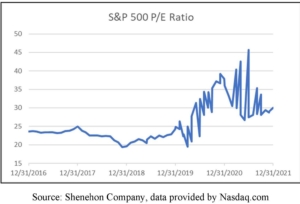Damages During Road Construction Projects
by Keeshawn Aleksuk and Robert Strachota
In the real estate world, the government has the legal power to take all or a portion of private property if the property is necessary for public use. Just compensation is the payment the government has to pay for taking private property. This process is referred to as eminent domain – the government’s power of condemnation. Just compensation in eminent domain is measured as the “fair market value” of the property, or the hypothetical price the real estate would bring after fair and reasonable negotiations between willing buyers and sellers as of the date the property is taken. In the appraisal industry of real estate, appraisers find the difference of the property’s value before the taking (before value) less what it is worth after the taking (after value), with the difference being the just compensation due to the property owner. Additionally, it should be noted that there are at least three categories of damages that need to be addressed to correctly provide just compensation during eminent domain: the direct taking of real property, construction damages, and permanent severance damages.
- Direct taking refers to the “fair market value” of the private property that is being taken during condemnation.
- Construction damages refer to the damages to the property from construction-related interference that occur on and after the date of taking. (All of the property, not just the portion being taken.)
- Permanent severance damages refer to the amount of damage to the remainder of the property when a portion has been taken during condemnation. (Result from Construction damages + Permanent diminution of value to the remaining property)
An appropriate condemnation action will address all three categories of damages. However, the government
oftentimes neglects the construction damages category since these damages can occur for several years after the actual date of taking and, in the government’s opinion, are often considered non-compensable. Therefore, it is the appraiser’s ethical responsibility to find how the market reacts to all the government’s activity in an eminent domain action.
Historically, construction interferences would most often occur no more than one year, making it difficult in the marketplace to measure these damages. When analyzing a property with a construction period of a year or less, it is challenging for the appraiser to track how the road construction project is damaging the whole property since there is a limited amount of market evidence regarding short-term impacts to many different types of properties.
However, when damages during construction are greater than one year (let’s say a period of three, four, or even five years), the appraiser can track the performance trends of the marketplace and property at hand, clearly recognizing the diminution of value to the property. The evidence can be seen in the cost approach (more depreciation, functional or economic obsolescence), income approach (a decrease, slight, or even no cash flow coming from the property when examining the DCF), and the sales approach (adjustments made for the conditions of sale or expenditures made immediately after purchase – for example, to bring the property back to its “before” state).
There has been evidence of these damages being upheld in Minnesota law in two cases: 1992 Minnesota Supreme Court Decision State v. Strom, 493 N.W. 2d 554 (Minn. 1992) and County of Hennepin v. Laechelt, A19-0473 (Minn. 2020).
1992 Minnesota Supreme Court Decision State v. Strom, 493 N.W. 2d 554 (Minn. 1992): Evidence regarding often changing and difficult access routes was a form of construction interference evidence that could be considered by the fact finder in the case. Additionally, the Court held that evidence of noise, dust, and vibrations generated by the project could also be considered by the fact finder.
Evidence: During construction the occupancy of the office building (subject) at issue dropped from 91.6% to 56.7%, and the net rental rate dropped from $10.59 per square foot to $7.90 per square foot. Evidence of these temporary losses in the ability of the property to generate revenue is admissible in a condemnation case.
County of Hennepin v. Laechelt, A19-0473 (Minn. 2020): Evidence of construction-related interference that comes into existence after the date of taking – “simply provides the benefit of hindsight.” Such evidence “may shed light on what a willing buyer and seller might reasonably expect” as of the date of taking.
Evidence: Property owner’s submitted photographs and testimony of how the construction project impacted her property.
In conclusion, an experienced appraiser strives to mirror the full behavior of the marketplace. It is the appraiser’s responsibility to show all consequences of an eminent domain action. It is the courts responsibility to decide what is legally compensable. Thus, the appraiser should discuss and display all damages so the court can clearly understand how buyers and sellers handle the consequences of a road construction project.





